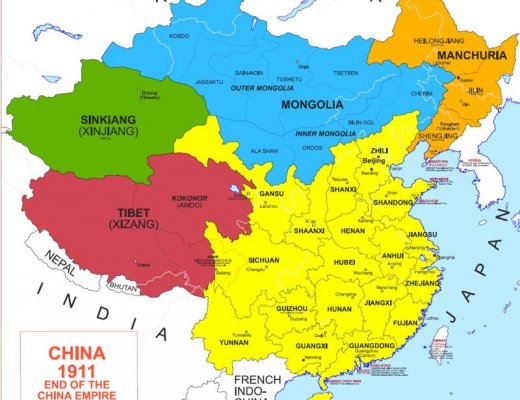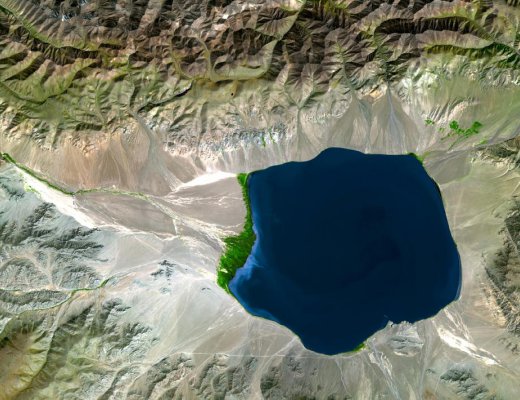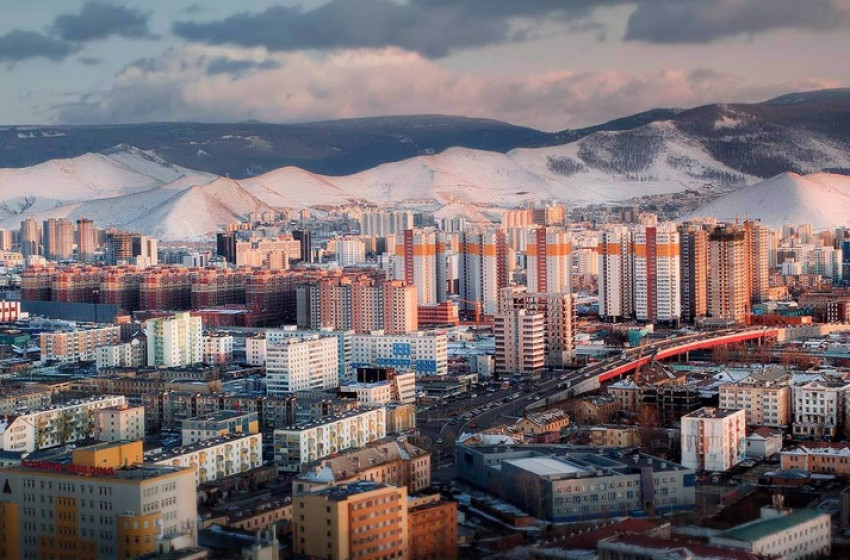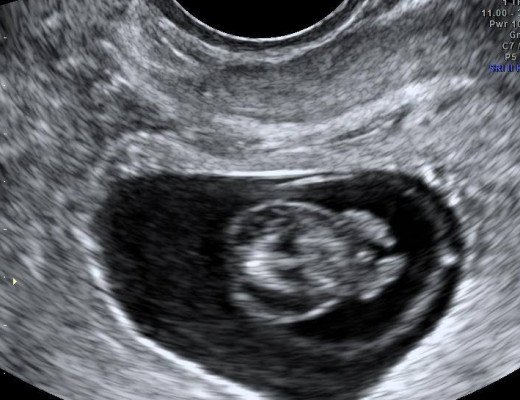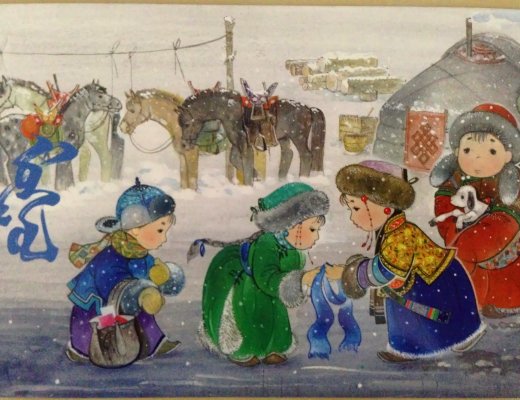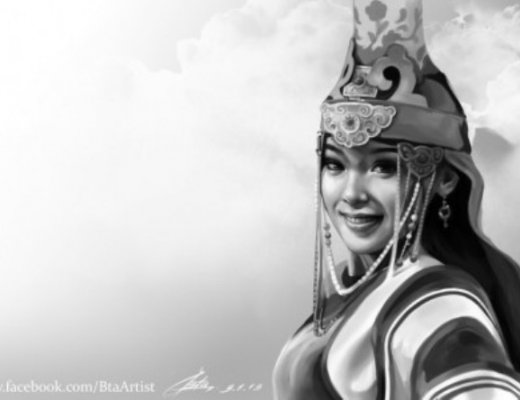1911 оны Монгол улсын газрын зураг
- Хэрэв та тийм хүсэлтэй, зорилготой бол дараах хувь хүний нууц алдахгүй Google холбоосоор орж нам байгуулахад шаардагдах гишүүнчлэлийн өөрийн мэдээллээ үнэн зөв бөглөж өгнө үү.
- Таны бичсэн гар утасны дугаарын дагуу очиж цаасан дээр таны гарын үсгийг зуруулж авах болно. https://forms.gle/NCYTLGDCmBH1mk7u6
Editors' introduction by Joseph W. Esherick and C.X. George Wei. Frontier studies have long been a sensitive area for historical research in the PRC, largely because of the demands for increasing autonomy in Tibet and Xinjiang-movements that are regarded as "separatist" by the authorities. This sensitivity makes the study of the 1911 Revolution on the frontier particularly difficult, because it was precisely in 1911 that independence movements manifested themselves in Tibet and Mongolia. Both of these regions had been incorporated into the Qing empire, whose emperors acted as patrons of the Tibetan Buddhism revered by Tibetans and Mongols alike. In Mongolia, the Qing court confirmed the status of Mongols nobles, and intermarried with the families of Mongol princes. But the 1911 Revolution created a secular republic, which made these religious and feudal ties difficult to maintain. More importantly, the revolution was launched with an overtly Han nationalist agenda to "expel the northern barbarians, restore China" that left little political space for the political aspirations of other nationalities. As a result, both Tibet and Outer Mongolia declared independence after the Wuchang Uprising.
Here, Feng Jianyong explores the impact of the 1911 Revolution on Mongolia. He uses a three-cornered chess-match (boyi) metaphor to analyze the competition for influence in the region between the Chinese central government, Outer Mongolia, and the Russian empire. Feng's analysis is notable for the attention it gives to the national aspirations of Mongol elites, rejecting prior research that has regarded the Mongols as little more than unwitting tools of meddling Russian imperialists. While it is true that after the Russian Revolution, the Soviet Union became a sponsor of Mongolia's independence, Feng notes that in the period after 1911, Czarist Russia only supported Mongolian autonomy under a loose and ill-defined Chinese suzerainty. By taking seriously the political goals of Mongol princes and lamas, he is able to explore the links between the state-building process in the early Republic of China and in Outer Mongolia.•
The year 1911 represents a significant milestone in the history of China. Under the banner of "expel the northern barbarians" (quzhu dalu), the Revolution of 1911 overthrew the traditional monarchy that had governed China for nearly two thousand years and established the Republic of China as a nation-state. Stimulated by this event, the nobles and lamas of Outer Mongolia launched an independence movement, announcing a separation from China and setting up the state of Great Mongolia. The independence of Outer Mongolia, an episode that challenged the construction of a unified Chinese nation-state, demonstrates the crisis of national identity in China's frontier regions. Because of the threat to China's frontiers and the involvement of the Russian government, past scholarship has often been founded on a kind of nationalist resentment. However, the construction of the Republic of China as a nation-state required the recognition of the new republican government by nationalities at home and abroad, to guarantee the legitimacy of the new government. Therefore, the former strategy of "establishing a state excluding the Manchus" was significantly outdated. The process of state-formation in Great Mongolia brought the issue of national identity among the frontier region's nationalities onto the political agenda.
 |
Many scholars have published important studies of the government's frontier policy in the early years of the Republic of China from the perspective of modern nationalism and the construction of the nation-state.1 Other scholars have explored the impact on national identity of events in the frontier region.2Obviously, much previous research was from a macroscopic perspective, focusing on the relationship between the central government and the frontier nationalities. This approach is insufficient to explain the origin and formation of national identity in the frontier regions, the reasons for Mongolia's break from China, or the impact of the central government's efforts to reunify the country.
Based on the above considerations, this chapter focuses on the issue of Outer Mongolia during the 1911 Revolution, from the perspective of the political history of the frontier region, and the "political game" involving Russia, the central government of China (both the Nanjing Provisional Government and the Beijing Government), and Outer Mongolia. It particularly addresses the following two issues.
First, we examine the evolution of the three-way political competition involving the Russian government, the central government of the Republic of China, and Outer Mongolia. Using game theory, we consider both protagonists and antagonists, the balance that was established among the three parties in the course of the game, and the result-the payoff. We discuss the fall of the Qing state, the new situation created at home and abroad, and the psychological setbacks suffered by the princes and nobles of Outer Mongolia. We trace the formation of Russian policy toward Outer Mongolia, the measures taken by the central government of the Republic of China, and the thinking of the princes and lamas of Outer Mongolia. We then evaluate the three parties in term of their changed status, their gains and losses.
Second, we try to shed light on the issue of state-building. State-building in Outer Mongolia had twofold implications. First, the central government of the young Republic of China tried to build a unified multinational country by incorporating the increasingly alienated Outer Mongolia. Secondly, Outer Mongolia (with Russian backing) sought to set up an independent state of Great Mongolia, based on the western nation-state theory of "one nation, one state."
Through this two-fold approach through political game theory on the one hand and state-building on the other, this chapter seeks to provide a new understanding of political changes in Mongolia during and after the collapse of the Qing dynasty.
State-building Practice of Outer Mongolia
During the early and mid-Qing period, the Qing state governed Outer Mongolia through a system of Mongol leagues and banners (mengqi zhidu) which entailed the "autonomous rule of frontier nationalities" (bianjiang minzu zizhi).This ensured the power of the central government to appoint the Jasag of each banner and assign territory to it. This practice strengthened Qing governance of Mongolia, and also guaranteed the interests of Mongolian nobles. Mongolian nobles maintained the right to govern their people and territories and also enjoyed considerable autonomy. It is fair to say that this arrangement contributed to the unification of the Qing state and the stability of Outer Mongolia for a considerable period of time. In addition the policy of alliance and intermarriage between Manchu and Mongol princes and nobles (Man-Meng lianyin, Man-Meng tongmeng) created a bond linking Mongol princes to the Manchu national community and a sense of identification with the Qing. This was useful in extending the authority of the Qing state to the frontier regions. Localism in Outer Mongolia was manifested in the nobles' pursuit of their economic interests in the banners, and the pursuit of hereditary rank from the Qing government. From this perspective, their localism reflected an identification with Qing governance of Outer Mongolia.3
In the late Qing era, the above situation was changed by the slow penetration of Russian influence into Outer Mongolia. Worried over the defense of the Mongolian frontier, Qing rulers adjusted its policy towards Outer Mongolia, seeking to strengthen the central government's control over the frontier region. In the first stage, through an adjustment of established rituals to assert its sovereignty over Outer Mongolia, the Qing alienated the Mongol "living Buddha," the Jebtsundamba Khutughtu. In 1762, during the reign of the Qianlong Emperor, the Qing resident in Kulun, Nuomuhun, prescribed that he would show his respect on bended knees when meeting with the Jebtsundamba Khutughtu; though the resident in Tibet would sit as an equal to the Dalai Lama. It was speculated that Qing rulers deliberately raised the status of the Jebtsundamba Khutughtu in order to neutralize the Dalai Lama's influence on Outer Mongolia. At the time of the Eighth Jebtsundamba Khutughtu, Yingkui, the Qing resident in Kulun, considered that since the residents in Tibet and Kulun shared the same status, the rituals for meeting the two living Buddhas should be similar. Thus the Qianlong Emperor exempted the Kulun resident from greeting on bended knee. He should just exchange Hada (ceremonial scarves) with the Jebtsundamba Khutughtu, while the latter should stand in greeting.4 This new practice incurred the discontent of the Jebtsundamba, Khenpo Lama and phyag-mdzod-pa. The Jebtsundamba Khutughtu requested that Qianlong send another ambassador to replace Yingkui, but was refused. Outer Mongolia was angry with Qing government.
In the late Qing, with the government's increased reliance on its residents and generals for the defense of the frontier, the power and influence of the Kulun resident grew ever stronger. In 1910, a conflict arose between the Jebtsundamba Khutughtu and Sanduo, the resident in Kulun, but Qing Dynasty rulers rejected the Jebtsundamba's request to remove the resident. This made Outer Mongolia feel wronged and disappointed. In general, if Kangxi, Yongzheng and Qianlong took a supportive attitude towards the princes and nobles of Outer Mongolia in order to appease them, the Qing Dynasty rulers since Jiaqing and Daoguang began to distance themselves from Lamaism, and took a cooler attitude towards the Jebtsundamba Khutughtu as time went by.5
At the same time, the Qing government tried to strengthen its direct control over Outer Mongolia by implementing New Policies centered on relaxing the prohibition on migration to Mongolia, encouraging land reclamation, and setting up new institutions. But these measures were interpreted differently by the frontier nationalities. As Joseph W. Esherick has said, the Qing "sought to strengthen central control of the periphery, a move that fundamentally challenged the established distinction between direct control through provincial and county administrators in China proper, and indirect rule through ethnic elites over the frontier."6 The implementation of the New Policies and changes in the methods of governance encroached on the vested interests of some princes and nobles of Outer Mongolia. They expressed their dissatisfaction to the central government. First, they submitted requests that the court not implement the New Policies in Outer Mongolia. When this failed, they sent a mission to St. Petersburg seeking support from Russia to resist the new measures taken by Qing. While Mongol provincialism in the early Qing was more passive and sought to maintain cordial relations with the central government, the provincialism of the late Qing was more politicized and tended to drive a wedge between the central and local government.
On the eve of the 1911 Revolution, this politicization was reflected in a letter dated August 1911 from the Mongolian mission to the Russian Tsar. The letter listed twenty points of dissatisfaction with the Qing government. The items included the New Policies institutions, immigration, land reclamation, marriages between Mongols and Han, and onerous loans. They considered these measures a direct threat to the political and economic privileges of the Mongolian princes and nobles. The letter previewed the future of Outer Mongolia: "We, the khans and ruling princes, shall elevate unanimously the most universally respected Bogd as the great Khan. Then we shall establish a nation of our own. We shall rely on your great country and have faith in your assistance."7 The letter urged the Russia government to weigh the situation and make a prompt decision: "If we do not take this chance to establish friendly relations, things cannot be achieved and we will regret it."8
In sum, spurred by opposition to the New Policies of the Qing and the expectation of support from Russia, Outer Mongolia manifested its political alienation from the central government. The emergence of national identity among the frontier peoples, based on their national interests and traditions, and their alienation from the Qing efforts to promote identification with a unified state cannot be underestimated. A Tokyo journal published by Manchu students pointed out at that time, "to the people, there is only national thinking, no concept of the state. This malady does not only exist among the Han, but also among Manchus, Mongols, Hui and Tibetans. If people are only inspired by national thinking, civil disturbances will occur. If there is no concept of the state, we will be unable to unify in an orderly manner."9 Political developments on China's frontiers, especially the great changes in Outer Mongolia, seemed to confirm these worries.
The inclusion of Outer Mongolia within the Qing Empire was also founded on traditional religious and vassalage relations. To most of the Mongolian elite, the Manchu-Mongol Alliance was a fundamental principle governing their relations to the Qing state. When Empress Dowager Longyu announced the Qing emperor's abdication, the princes and nobles of Outer Mongolia felt that this represented the fall of the emperor who had supported their faith, and also ended their relationship of vassalage to the Qing.10 The blood relations between Manchus and Mongols were also seen as a foundation of the empire's legal dominion, and the existence of Qing dynasty was a precondition of their identification with China. That legal dominion would end if the Qing dynasty ceased to exist.11 Although this point of view was not theorized or systemized, it had broad influence in the upper levels of Outer Mongolian society.
At the same time, the Chinese revolutionary party's rhetoric of "expelling the northern barbarians" terrified the Outer Mongolian elite. They worried that their existing privileges would be eliminated after the revolution. In addition, after the revolution, many Mongolian intellectuals were full of nationalist enthusiasm. Wang Zongluo, a Mongolian student at the Army Nobles' School, was an example. Even before 1911, he met secretly with Mongolian schoolmates at the Yonghegong Lamasery in Beijing, and spread revolutionary thoughts, "but laid particular stress on Mongolia's independence." According to him, "in today's China, no matter which party comes to power, it will carry out the Han program of 'expelling the northern barbarians,' which offers no benefit to the Mongolian people." Thus, in order to defend Mongolia's interests, "once he heard that Outer Mongolia had declared independence and the Jebtsundamba had become the emperor, he resolved to go to Outer Mongolia to join the national independence movement."12
Some frontier nationality elites thought about their people's political development and made a choice: they agitated for Mongol nationalism as the pretext to compete for power. The Jebtsundamba and other nobles and lamas announced the independence and founding of Great Mongolia on December 1, 1911. They gave the Qing resident, Sanduo, a strict deadline to leave Mongolia. After announcing the reasons for independence, the proclamation stated that, "since many provinces in China proper have announced independence and cut ties with the Manchus, we Mongols, in order to protect our land and religion, should also announce independence."13 This served as a warning to the new republican government that it would be unable to advance its authority over Outer Mongolia. On Dec. 28, Jebtsundamba ascended the throne as emperor of Great Mongolia, with the reign title "Gongdai." With this, the sense of political alienation among the elites of Outer Mongolian developed into an actual process of state-building.
Early Republican Policy toward Outer Mongolia
Immediately after the Revolution of 1911, many provinces declared independence. This "independence" meant separation from Qing governance, not standing alone as a separate state. The revolution's defining slogan, "expel the northern barbarians and revive China" (quzhu dalu, huifu Zhonghua) had an obvious impact on the frontier regions. The revolution aimed to restore Han governance to the eighteen provinces of China proper while rejecting the northeast, Inner and Outer Mongolia, Xinjiang, and Tibet. In this sense, if the independence of the provinces meant separation from the Qing government, independence in the frontier regions meant breaking away from China. Undeniably, this powerful racial nationalism played an important role in social mobilization to overthrow the Qing. Nevertheless, to build a new multi-national republic, its utility was questioned and challenged. The central government of the early republic had to unify the three attributes of any state: territory, sovereignty, and people. To this end, the government took several measures to restore the relationship between the center and Outer Mongolia.
1. From "Expel the Manchus" (pai-Man) to a "Republic of Five Nationalities" (Wuzu gonghe), to the "Chinese People" (Zhonghua minzu). On New Year's Day, 1912, in the declaration of the provisional president of the Republic of China, Sun Yat-sen solemnly declared, "the foundation of the state lies in its people. Uniting the Han, Manchu, Mongolian, Hui, and Tibetan regions in one state, and the Han, Manchu, Mongol, Hui and Tibetan nationalities as one people-this is national unification." Soon thereafter the Provisional Constitution of the Republic of China put the equality of nationality into law: "the people of the Republic of China are all equal without regard to ethnicity, class, or religion." After succeeding the presidency, Yuan Shikai issued an order that "now the state is a republic of five nationalities. Since Mongolia, Tibet and Manchuria are part of China's territory, and the Mongolian, Tibetan and Manchuria peoples are all citizens of the Republic of China, the imperial usage of 'vassal states' (fanshu)should be discontinued. Now we should prepare a comprehensive plan to unify administration of the Mongolian, Tibetan and Hui areas with the aim of achieving the great unity of all peoples (minzu zhi datong)."14 This was the conception of the "Republic of Five Nationalities."
"The Republic of Five Nationalities" was a timely and effective statement, but could it cover all the nationalities within the Republic of China? Some scholars at that time objected: "recent scholars have said that the aboriginal people in China were Miao nationality.... As Miao were not included in the five nationalities, what kind of a republic is that? In my opinion, we should not name the nationalities; or if we speak of nationalities, we should say the republic of six nationalities, equality of six nationalities, not five nationalities."15 The minister to Tibet, Lu Xingqi, noted in a telegram to the central government that "Gurkha, a small but wealthy state had paid tribute to our emperor and remains very respectful. The Gurkha actively meditated during Tibet's rebellion. But they have doubts about which nationality Gurkha belongs to, as our government has announced a Republic of Five Nationalities. The Gurkha believe in Islam. If that makes them part of the Hui, then is Turkey, which also believes in Islam, also part of the Republic of Five Nationalities?"16 Thus the concept of five nationalities had its limitations, generated opposition between the five nationalities and other nationalities in the republic, and blurred national identity among the frontier peoples. It was necessary to explain and further refine the concept of "Five Nationalities."
Yuan Shikai himself recognized the defects of the five nationalities concept. We can trace Yuan's intent from the usage of "Chinese Nation" in his letters with the Jebtsundamba.17 As a politician, Yuan emphasized practical considerations, leaving theoretical constructs to scholars. Wu Guanyin, a follower of Liang Qichao, published "Assimilation of the Five Nationalities" in Yongyan magazine in early 1913. In this article, Wu demonstrated the composite nature of the Five Nationalities, and explained that blood relations of the Five Nationalities had been shared and fused through history.18 Consequently, Wu suggested: "from now on, the Chinese people should not be called the Five Nationalities, but 'Zhonghua minzu' Chinese Nation [English in original]. There are two meanings of 'Nation,' one is nationality, the other is people of a nation (guomin), and our 400 million compatriots should be called the Chinese Nation or the Chinese people."19
2.Conciliating the Elites of Mongolia. On February 12, 1912, the Nanjing Provisional Government issued its "conditions on the status of the Manchu, Mongol, Hui, and Tibetan people" in anticipation of the Qing court's abdication. After Yuan Shikai came to power, on August 19, 1912, the government issued three regulations to conciliate the princes and lamas of Mongolia: regulations on the treatment of Mongolia, regulations on promotion of Mongol nobles, and regulations on titles for lamas and monks.
The first of these, on the treatment of Mongolia, exerted considerable influence on Mongolian society. The first article stated that "Outer Mongolia will no longer be treated as a vassal state, and will be treated the same as the inner provinces [neidi:within the wall]. The central government documents to Mongolian offices should not use words like managing vassals (lifan), establishing a colony (zhimin), or colonizing (tuozhi)." Article 6 stated that "the foreign affairs and border defense of Mongolia should be administered by the central government, but in affairs of great importance to the local region, the local government should be consulted before implementation. The two articles in fact placed Outer Mongolia and the inner provinces under the same governance, with the central government controlling foreign and military affairs. The first article offered a legal basis for applying the provincial system to Outer Mongolia. In addition, article 9 stated that "Mongols who know Chinese and have the legal qualifications may be offered positions outside of Beijing,"20 which made it possible for the central government to extend national education to Mongolians.
3.Establishing the legal status of Outer Mongolia. After the founding of the Republic of China, a series of laws and regulations covered the frontier regions: the Provisional Constitution of the Republic of China, the Law on Organization of the Legislature, and Law on Elections to Parliament. The central government also issued laws and regulations on Mongolian affairs and the frontier, such as a law for election to parliament from Mongolia, Tibet, and Qinghai (1912),21 regulations for travelling expenses for the first trip to Beijing by the princes of Mongolia, Hui people, and Tibetans after the founding of the Republic of China (1913), 22 and provisions for the Department of Mongolian and Tibetan Affairs (1914).23 Chapter one of the Provisional Constitution stipulated that "the territory of the Republic of China includes twenty-two provinces, Inner and Outer Mongolia, Tibet, and Qinghai."24 It was necessary at the time to stress that Outer Mongolia belonged to China. This regulation was of great significance for enhancing Chinese citizens' territorial understanding and resisting foreign aggression. Most important was the fact that Chinese sovereignty over Outer Mongolia did not change under the new republic and was protected by the constitution.
A debate over the Law for the Organization of the Legislature illustrates these concerns. According to article no. 5 of the provisional constitution, "the people in the Republic of China are all equal without regard to ethnicity, class, and religion." Article 18 stated that "every province, Inner Mongolia, Outer Mongolia, and Tibet shall select five senators, and Qinghai one."25 To protect the spirit of this constitution, no one should object to Inner and Outer Mongolia or Tibet's selection of their own senators. But the first draft of the Law on Organization of the Legislature stipulated that parliament should be composed of members selected by the provinces, excluding Mongolia, Tibet, and Qinghai. In July 1912, the drafter of the law, Gu Zhongxiu, argued that the law must be carried out as passed: "Since conditions in Mongolia and Tibet are different, and institutions have not yet been set up, they cannot be treated like inner provinces." Having a distinct status structure and administration, "these areas should be temporarily considered as special cases. After their political systems are reformed and superstition eliminated, then they can enjoy the same electoral rights as the inner provinces. It would be impractical to make laws blindly following theory while neglecting the facts." Liu Chongyou objected to Gu's position. Liu pointed out that according to the Provisional Constitution, Mongolians and Tibetans should have the same right to vote and be elected as other citizens, and not be deprived of the voting rights on grounds of insufficient knowledge. Otherwise, "it would leave an indelible stain in legal history."26 After debate, Article 5 was added to the law: "quotas for members of parliament from Mongolia, Tibet, and Qinghai are as follows: twenty-seven from Mongolia, ten from Tibet, and three from Qinghai." Tang Hualong suggested a revision of Article 3: rather than saying that "parliament is composed of members elected by the provinces," it should read "parliament is composed of members elected by localities," which was passed.27
It was an appropriate decision to consider the particular conditions in Mongolia, Tibet, and Qinghai in the revision of the Law for the Organization of Parliament and make special provisions. Especially when Russia and Britain were attempting to draw Mongolia and Tibet away from China, if the law barred representatives from Mongolia and Tibet, that would provide excuses for their separatism. This revision was not only in conformity with the constitutional provision that "all nationalities in the Republic of China are equal," but was also conducive to the construction of a unified multi-national state.
4.Strengthening the administration of Outer Mongolia and other frontier regions. During the Nanjing Provisional Government, affairs in Mongolia and Tibet were pressing. "Before local institutions were set up, there was no special institution for nationality affairs. Nationality affairs were managed by the Interior Ministry according to past precedent. A Frontier Bureau (Bianwuju) was established to show their importance."28In order to strengthen the administration of Outer Mongolia and Tibet, on May 8, 1912, the Senate of the Beijing government decided to set up a Bureau of Mongolian and Tibetan Affairs (Meng-Zang shiwuju), with Mongolian and Tibetan sections to investigate and plan for the two areas. On July 19, the Senate made clear that the prime minister was in charge of the Bureau of Mongolian and Tibetan Affairs.
Besides establishing the Bureau for Mongolian and Tibetan Affairs, the central government also deployed military forces in Outer Mongolia. On July 9, 1915, the central government issued regulations for resident ministers in Kulun, Uliastay, Kobdo, and Kyakhta, to clarify the administration on Outer Mongolia.29 According to the regulations, the resident in Kulun administered Tushetu and Chechnya, and should oversee affairs in Uliastay, Kobdo, and Kyakhta, supervising the officers in those three areas. With these regulations, the central government institutionalized the administration of the frontier area.
5.Central Government Integration of Education in Outer Mongolia. In the early years of the republic, with the spread of national consciousness and the education of citizens, the central government encouraged new schools throughout the country. At the same time, the central government instructed the frontier areas to promote education and run schools on the western model. The frontier areas also wanted to set up new schools. Cultural enlightenment and the cultivation of talent became the task of that time. Given the undeniably different customs and languages of the frontier regions, the Education Ministry set out to investigate actual conditions, "hoping to give instruction and gradually set up schools."30
The Ministry of Education promulgated a comprehensive agenda for developing education in Mongolia, Muslim areas, and Tibet.31 First, for frontier primary education, surveys should be done on the distribution of minority groups, the numbers of children of school age, and the current distribution of primary schools, levels of literary, and literacy in Chinese. Second religion, local customs and their impact on education should be studied. Finally there should be plans for personnel, funding, school construction and teacher selection. Certainly, the key purpose of this agenda was to integrate the frontiers through national education so that the frontier peoples would become true "citizens" (guomin) of the Republic of China.
In sum, the central government created the Republic of Five Nationalities to integrate the Mongolian region within a Chinese national identity, and promoted the concept of the "Chinese nation" to improve relations between the central government and the frontier. In this way, it discarded the Han racial nationalism and stressed the established fact that every nationality belonged to China. Then, frontier education was promoted to cultivate the centripetal inclination of the frontier nationalities toward the newly founded nation-state. The central government conciliated the Outer Mongolian elites by conferring titles and material benefits, a necessary compromise for the sake of national unity. Finally, the government protected the interests of Outer Mongolia by legislation and civil administration, and established state sovereignty over Outer Mongolia in its constitution and state institutions.
The Russia- Mongolia Agreement and the Ambiguous Status of Outer Mongolian State-building
After the Wuchang Uprising, the "state-building" enterprises in both Outer Mongolia and China were of great concern to Russia. On Oct. 13, 1911, the acting Russian foreign minister, Nila Tov, cabled the Russian ambassador to Beijing that Russia should take advantage of the Qing predicament in the face of revolution in the south and force China to recognize Russia's vested interests in Outer Mongolia.32 Though claiming to be "powerless to undertake any active measures," Russia helped Outer Mongolian princes build their military forces and supplied arms through Russia's consul in Kulun, thus providing powerful backing for Outer Mongolia's independence.
When Outer Mongolia, with the support of Russia, became estranged from the central government, the Russian government started negotiations with China on the Mongolian issue. In December 1911, Russia proposed to the Qing government that it would like to serve as mediator between China and Outer Mongolia. Since the Qing court was preoccupied with domestic affairs, it did not dispatch a representative to Russia for negotiations.
After May 1912, the situation in Outer Mongolia entered a new stage. The secret agreement between Russia and Japan was signed during this period, and Russia and Britain contacted each other for a mutual understanding for handling the affairs in Mongolia and Tibet. In Outer Mongolia, the Kulun government had consolidated its dominion, and established effective control over Outer Mongolia and parts of Inner Mongolia. After analyzing China's overall situation and international position, Krupensky, the Russia minister to Beijing, proposed that Russia take a much more aggressive stance on Outer Mongolia. In an urgent report to Foreign Minister Sazonov, Krupensky stressed that "China's dispatching an army to Tibet and taking measures in Kobdo show clearly that China is attempting to reestablish its power in areas that have separated from China."33
In July 1912, Russia issued an ultimatum to the Beijing Government with three restrictive conditions for negotiations on Outer Mongolia.34 Russia believed that the Beijing Government did not wish to retain sovereignty with Russian assistance. Instead, Beijing tried to counteract Russia's influence in Outer Mongolian, and use contradictions between the Khutughtu and other elites to recover control of Outer Mongolia. Russia was also concerned over Beijing offering other powers "equal opportunity, opening up" Mongolia to balance Russia. "This would result in a convergence of foreigners' business interests and Chinese people, which will lead to fundamental reform of domestic institutions in Outer Mongolia."35
Based on these imagined concerns, Russia started to "securitize" the Mongolian issue.36 On Aug. 15, the Russia government held a special ministerial meeting to formulate a new policy on Outer Mongolia. Rejecting a passive policy toward Outer Mongolia as dangerous, the attendees proposed signing a treaty with the Kulun administration, including the following points: Russia would protect the autonomy of Khalka; the Chinese military would not be allowed to enter Mongolia and Chinese would not be allowed to migrate there; and on the Mongol side, the government of Khalka should ensure for Russian businessmen all the privileges and rights stated in previous treaties between Russia and China.37
In fact, Russia did not have sufficient evidence to demonstrate that Beijing was about to forcefully solve the problem of Outer Mongolia. But from a realistic perspective, what mattered was not the intention of Beijing but the interests of Russia. The Beijing Government was an imaginary threat, useful only to provide a pretext for Russian action. Russia dealt with Outer Mongolia directly and signed the Russia-Mongolia Agreement. Realizing China's hard position on the Outer Mongolia problem, it was not the proper time to mediate between China and Mongolia. Accordingly, Russia contacted the princes and nobles of Outer Mongolia directly, and took advantage of the negotiations with Outer Mongolia to force China to change its unequivocal position.
Korostovetz, the Russian representative in Kulun, negotiated secretly with the Kulun authorities. Outer Mongolia requested that Russia recognized Outer Mongolia as an "independent state."38 Refusing this request, Korostovetz claimed that Russia would only recognize Outer Mongolian "autonomy," and only on the condition that Russia's demands were satisfied. The Outer Mongolian interior minister Da lama refused Russia's draft and pointed out that "the so-called Russia-Mongolia agreement was not beneficial for Mongolia. Mongolians are put on the chopping board to be carved up." If forced to accept Russia's conditions, Outer Mongolia would be like Bukhara or Korea. Da lama asked if this document would bring real independence to Mongolia. What kind of relationship was established between Russia and Mongolia? Was it protective? Da lama was also unsatisfied that the agreement did not include Inner Mongolia, Kobdo, Tangno Uriyangqai, and Hulunbuir that had already recognized Kulun's sovereignty. He thought it was unfair to cut Mongolia apart, and announced that "the princes in Khalka have responsibilities to care about their destinies, otherwise they would be criticized for betraying the interests of their people." He reminded Russia that China insisted on reconciling with Kulun, and would make more concession as long as the relationship continued. Kulun would negotiate with [the Chinese representative] Nayantu, who was about to arrive. The Mongolian government was in a dilemma, forced to choose between Russia and China."39
Korostovetz reported to Sazonov that Mongolia raised many immoderate requests, some of which could never be accepted.40 Korostovetz also learned that the Khutughtu and the princes had received a telegram from Nayantu, warning Outer Mongolia not to sign a treaty with Russia, and demanding that they give up independence in return for various favors.41 He also realized that China had sent forces to Tibet or Kobdo, which meant China would pursue a more active and resolute policy to recover these areas.42 Korostovetz suggested that the Kulun government be coerced to sign an agreement protecting Russia's interests.
Based on instructions from the Russian government, Russia and Mongolia held negotiations, changed the draft agreement, and signed the Russian-Mongolian Agreement on November 3, 1912. On the status and title of the Kulun government, the Russian text wrote "Mongolian government," "Mongolian officials," and "autonomous organization," while the Mongolian text wrote "state of Mongolia" and "a self-governing, autonomous organization." Needless to say, the two parties had different understandings of some articles. The Kulun government sought to indicate that it was a real sovereign state and hoped to be recognized by more sovereign states by signing this agreement. The Russian government meant to take a substantial step towards solving the problem of Outer Mongolia. Despite the difference in understanding, the Russian government believed that the political destiny of the Kulun government wholly depended on Russia's protection. If so, Russia could obtain its purpose by pressing Outer Mongolia. The most important thing to Russia was to protect its economic interests through this agreement and to shock the Beijing Government.
The China-Russia-Mongolia Agreement Overrides Outer Mongolia's State-building Experience
The Russia-Mongolia Agreement and the increasingly intimate relationship between Russia and Mongolia made the Chinese government anxious. On Nov 19, 1912, China's ambassador to Russia urged Russia to give up the agreement, and promised Sazonov that China would negotiate with Russia to resolve the Outer Mongolia problem.
China and Russia then started negotiating on Outer Mongolia. The situation changed again on January 12, 1913, when Kulun authorities and the Tibetan local government signed the so-called Mongolia-Tibet Agreement, in which both announced that they had separated from the Qing government and China, and had founded independent states. They promised to recognize each other's independence and offered mutual assistance.43 At this time, Tibet still belonged to China. Although Outer Mongolia had announced independence, it was still considered a part of China as neither China nor other states recognized Mongolian independence. Since neither Tibet nor Outer Mongolia had the qualifications to sign international treaties, the Mongolia-Tibet Agreement had no legal effect. Even Korostovetz admitted that both parties lack authority and capacity to give the Mongolia-Tibet Agreement political effect. Thus, "it is inappropriate to call this international law."44
The significance of the Mongolia-Tibet Agreement did not lie in the realization of its political intent, but in its practical effect. As Korostovetz pointed out, "this agreement can be seen as a protest against China's suzerainty over Tibet and Mongolia and evidence of cooperation between the two dominions…The rapprochement between Mongolia and Tibet has upset the Beijing Government. The competition between Mongolia and Tibet has been eliminated by the need to unite and support each other in opposition to Chinese oppression. From the perspective of Russia's interest, although the rapprochement between Mongolia and Tibet is imperfect as a matter of law, it can help suppress the Chinese government's vanity and pride, and lead to concessions on China's part."45
There were three side-effects of the Mongolia-Tibet Agreement. First, it reflected the political alienation of Outer Mongolia and Tibet from the central government. Second, it was a heavy blow to the strategy of territorial unification through the "Republic of Five Nationalities." Third, it provided an opportunity for Russia and Britain to enhance their control of Mongolia and Tibet respectively. At a minimum, it showed that the local governments of Mongolia and Tibet were emotionally estranged from the republican central government.
Following the agreement, China strengthened contacts with Russia and tried to reach an agreement on Outer Mongolia. Basic agreement was reached by May 1913, and on November 5, 1913, a Sino-Russia Declaration was announced and notes were exchanged. The declaration had five parts, including "Russia's recognition of China's suzerainty over Outer Mongolia," and "China's recognition of Outer Mongolian autonomy." In a diplomatic note supplementing the agreement, Russia recognized Outer Mongolia as part of Chinese territory.46
Following the Sino-Russia Declaration, a conference involving China, Russia and Mongolia was held at Kyakhta from September 1914 to March of 1915. At the conference, the three parties negotiated the issue of Mongolian autonomy under Chinese suzerainty. The representatives of Outer Mongolia raised the following points. First, Outer Mongolia was satisfied with articles in the Sino-Russia Declaration on Outer Mongolia's autonomy. Second, according to the Russia-Mongolia agreement and Articles 1 and 2 of the Sino-Russia Declaration, the maintenance and recognition of the official name for Mongolia and the Khan can never be changed. Third, the Mongolian government was ready to recognize China's suzerainty over Outer Mongolia and, in accord with the Sino-Russian Declaration, would not conclude treaties with foreign states that violated China's territorial integrity. Beyond this, the Mongolian government did not recognize any other duties derived from Chinese suzerainty. Fourth, the Mongolian government believed that according to Article 3 of the Sino-Russian Declaration, Outer Mongolia was permitted to sign treaties of friendship and commerce.47 The standpoint of the Outer Mongolian representatives was that since the Sino-Russia Declaration recognized China's suzerainty over Outer Mongolia, Outer Mongolia was a semi-sovereign state and its status could not be degraded to local autonomy within China. The concept of suzerainty referred to a relationship between two states, and was unsuited for relations of local autonomy.
The Russian ambassador further explained that Russia treated Outer Mongolia as an autonomous state. China had only suzerainty over Outer Mongolia, so Outer Mongolia had the freedom to act within its territory and to the extent of its power.48 The Chinese representative stated that its wish to have "the three parties clarify and specify the concrete limits of suzerainty was already a great concession." "Outer Mongolia cannot unilaterally specify the limits of suzerainty as a precondition for the recognition of suzerainty."49
Clearly, the focus of the debate among the three parties was not the autonomy of Outer Mongolia, but the type of autonomy. What, concretely, should autonomy include? On these details, the Beijing government, Outer Mongolia, and Russia had substantial differences. With vested interests in autonomy, the elite of Outer Mongolia hoped to maximize the scope of autonomy. To them, complete autonomy was the ideal. Regarding Outer Mongolia as part of China, the Beijing Government wished to restrict Outer Mongolia's autonomy, confining it under a centralized system supervised by the Beijing government. Russia advocated a middle ground of compromise between the contradictory positions, and advocated autonomy and suzerainty instead of independence and sovereignty.
Each of the three parties had its own conception of Outer Mongolia's political future. Kulun wanted a sovereign state; Beijing thought Outer Mongolia should be part of China; Russia wanted an autonomous Outer Mongolia under some illusive sovereignty of China. After forty-eight meetings and furious debates, the three parties came to agreement on June 7, 1915 and signed the China-Russia-Mongolia Agreement. At this point, the practice of "state-building" in Outer Mongolia was rejected in principle, and the Kulun government shifted from independence to autonomy.
The Mongolian movements for independence or autonomy during and after the 1911 Revolution left the issue of "suzerainty" as an unsolved problem between China, the Kulun authorities, and Russia. The meaning of "suzerainty" was ambiguous in international law and customary practice. Therefore, although the Kyakhta conference did not recognize state-building in Outer Mongolia, the Russian-introduced idea of autonomy with Chinese suzerainty allowed the Kulun authority to form an actual autonomous country in place of local autonomy under the central government.
Conclusion
After the 1911 Revolution, the princes and lamas of Outer Mongolia became estranged from central government. They announced independence and established Great Mongolia. The Qing government, the Nanjing provisional government and the republican government in Beijing took several measures to integrate Outer Mongolia. Russia, pursuing its economic and political interests, then entered the scene, which complicated the situation and led to a three-party game. After Outer Mongolia declared its independent state of Great Mongolia, the central government took a number of steps to reintegrate the region. Though the efforts to promote national identity were well conceived, in actual practice, the weakness of the central government in the early republic prevented it from exerting its powers on the frontier. The unification and territorial integrity of the sovereign Chinese republic were more symbolic than real. Even so, the pursuit of sovereignty and territorial integrity was the guiding principle of the central government of the Republic of China. Through its three-cornered game with Russia and Outer Mongolia, the central government forced Outer Mongolia to abandon independent state-building, which could be called "an invisible expansion" of central authority. Through this "invisible expansion," the central government acquired a legal basis for external propaganda regarding the integration of Outer Mongolia, though it lacked effective control over Outer Mongolia or the political allegiance of the ethnic elite.
In the late Qing dynasty, the central government pursued a policy aimed at strengthening sovereignty, through policies of "nationalization" and "centralization." In this process, the Qing set up provincial institutions in Xinjiang, similar to those in the inner provinces, which enhanced central government control over Xinjiang. Consequently, Xinjiang in the republic demonstrated stronger political allegiance to the central government. In Outer Mongolia and Tibet, although the Qing government tried to strengthen its control through the New Policy reforms, they were not effective. The Qing government defined its relations with Outer Mongolia and Tibet through traditional relationship of feudal subordination which were less robust. Because of the different political institutions and practices, these two regions followed different paths after the 1911 Revolution. In Outer Mongolia and Tibet, the traditional Manchu-Mongolian alliance was not compatible with modern state-building. The central government of the Republic of China found it difficult to integrate Outer Mongolia and Tibet politically.
In Outer Mongolia, the national identity of the lama and noble elite was influenced by another important factor, the desire to protect common resources and shared interests. The competition for scarce resources can play a significant role in the formation and maintenance of ethnic group identity.50 Thus changes in the objective material environment can affect change in ethnic identity. To some extent, this principle can be applied to the experience of Outer Mongolia during the 1911 Revolution and the founding of the Republic of China. Faced with increasing central government encroachment and Han migration, the elites of Outer Mongolia worried that their vested interests were being threatened, and felt that they themselves were being treated as "the other" by the center. As a result, their identification with China became problematic.
This article and introduction are slightly adapted from Joseph W. Esherick and C.X. George Wei, eds., China: How the Empire Fell (London: Routledge: 2013), pp. 249-67.
FENG Jianyong (冯建勇) Associate Professor, Research Institute for Chinese Borderland History and Geography, Chinese Academy of Social Sciences, holds a PhD in history from the Graduate School of the Chinese Academy of Social Sciences. His main research areas are Chinese frontier history and theory, and he has published Xinhai geming yu jindai Zhongguo bianjiang zhengzhi bianqian yanjiu [The 1911 Revolution and Political Transitions on China's Frontier].
Recommended citation: Feng Jianyong, "The 1911 Revolution and the Frontier: The "Political Game" and "State-Building" in Outer Mongolia during the 1911 Revolution," The Asia-Pacific Journal, Vol. 12, Issue 5, No. 3, February, 3, 2014.
Notes
1 See Yu Fengchun, Zhongguo guomin guojia gouzhu yu guomin tonghe zhi licheng-yi ershi shiji shangbanye dongbei bianjiang minzu guomin jiaoyu weizhu [National state-building and national integration in China-focusing on national education on the northeast frontier in the first half of the 20th century] (Haerbin: Heilongjiang jiaoyu chubanshe, 2006). From the perspective of national state-building, this book explores national education in northeast China in the late Qing and early republic, and notes the difficulties it faced. Other related studies are Li Yuwei, "Beiyang zhengfu de minzu zhengce yu Neimenggu de minzu wenti" [The ethnic policy of the Beiyang government and the ethnic problem in Inner Mongolia], Neimenggu shehui kexue, 2004, no. 2; Zhou Jinghong, "Qingmo minguo shiqi Neimenggu diqu zhengqu guanli tizhi bianqian ji dui Mengguzu de yingxiang" [The transformation of the administration system of Inner Mongolia and its influence on Mongols in the late Qing and early republic] (Zhongyang minzu daxue xuebao, 2004, no. 6); Ma Rong, "Zhonghua minzu de gongtong wenhua yu 'Huangdi chongbai' de zuqun xia'ai xing [The common culture of the Chinese nation and the parochialism of Yellow emperor worship], Xibei minzu yanjiu, 2010, no. 2: 6-13 .
2 Related studies include Zhang Qixiong, "'Duli wai Menggu' de guojia rentong yu zhuquan guishu jiaoshe"[National identity in 'Independent Outer Mongolia' and the negotiations over sovereignty] Zhongyang yanjiuyuan jindaishi yanjiusuo jikan, vol. 20 (1991): 259-291; Huang Xingtao, "Xiandai 'Zhonghua minzu' guannian xingcheng de lishi kaocha-jianlun xinhai geming yu Zhonghua minzu rentong zhi guanxi" [A historical examination of the formation of the modern conception of a "Chinese Nation:" the relationship of the 1911 Revolution to the identity of the Chinese nation], Zhejiang shehui kexue, 2002, no. 1: 129-142; Zhang Yong, "Cong 'shiba xingqi' dao 'wuseqi'-Xinhai geming shiqi cong Hanzu guojia dao wuzu gonghe guojia de jianguo moshi zhuanbian" [From the Eighteen-Star Flag to the Five-Color Flag-the transition of nation-building from a Han nationality state to the republic of five nationalities] (Beijing daxue xuebao, 2002, no. 2: 106-114); Hua Guoliang, "Minguo chunian Menggu wanggong dui 'wuzu gonghe' zhengce de minzu rentong" [Mongol princes' national identity in relation to "the republic of five nationalities" policy of the early republic], Xuzhou shifan daxue xuebao, 2003, no. 2: 103-106.
3 Feng Jianyong, Xinhai geming yu jindai Zhongguo bianjiang zhengzhi bianqian yanjiu [Study on the 1911 Revolution and the political changes on China's frontier of China] (Haerbin: Heilongjiang jiaoyu chubanshe, 2012), 114.
4 Li Yushu, Wai Menggu zhengjiao zhidu kao [On the political and religious system of Outer Mongolia], (Taipei: Zhongyang yanjiuyuan jindaishi yanjiusuo zhuankan, 1962), 419.
5 See Jagchid Sechen, "Wai Menggu de 'duli' 'zizhi' he 'chezhi'" [Independence, autonomy and repealing independence in Outer Mongolia], Zhongguo jindaishi congkan, vol. 4, (1962): 39-142.
6 Joseph W. Esherick, "How the Qing Become China," in Joseph W. Esherick, Hasan Kayali and Eric Van Young, eds, Empire to Nation: Historical Perspectives on the Making of the Modern World (Lanham, MD: Rowman & Littlefield, 2007), 240.
7 Urgunge Onon and Derrick Pritchatt, Asia's First Modern Revolution: Mongolia Proclaims Its Independence in 1911(Leiden: E.J. Brill, 1989), 13.
8 Ibid., 12.
9 Mu Duli, "Meng-Hui-Zang yu guohui wenti" [The issue of Mongols, Hui, and Tibetans in Parliament], Unification News, no.5, 1907:49-50.
10 See Matsumoto Masumi, Zhongguo minzu zhengce zhi yanjiu-yi Qingmo zhi 1945nian de'minzulun' wei zhongxin [Study of China's ethnic policy: focusing on nationality theory from the late Qing dynasty to 1945] (Beijing: Minzu chubanshe, 2003), 56-57.
11 See Yan Gang,"Qingdi xunwei zhaoshu zai Zhonghua minzu tongyi shang de falü yiyi"[The legal significance of the abdication announcement of the Qing emperor to the unification of the Chinese nation], Huanqiu falü pinglun, 2011, no. 5, 23.
12 Wang Zongluo,"Xinhai geming diandi jianwen he duiwo de yingxiang" [The influence on me of bits of knowledge of the 1911 Revolution], Neimenggu xinhai geming shiliao [Historical materials of the 1911Revolution regarding Inner Mongolia] (Huhehot: Neiminggu renmin chubanshe,1979, 84-85.
13 Quoted in Liu Xuetiao, Qingmo minchu Zhong-Meng zhi fenhe guanxi [Split and unification of China and Mongolia in the late Qing and the early republic] (Taipei: Topical study of Mongolian-Tibetan Committee Series, 2002), 27.
14"Linshi da Zongtong Yuan Shikai mingling"[Provisional President Yuan Shikai's order], Dongfang zazhi, vol. 8, no. 12, 4.
15 Wu Guanyin, "Wuzu tonghua lun" [Assimilation of five nationalities], Minguo jingshi wenbian [Statecraft articles of the Republic of China] (Beijing: Beijing tushuguan chubanshe, 2006), vol. 1, 511.
16 Jiang Ruqun, ed., Chaoye xintan [New stories in the country] (N.p.: Guanghua bianjishe, 1914), 39. The Gurkha state was taken into British India in 1846, and did not belong to China. The Gurkha people were not a Chinese nationality, but Lu's argument expresses the thought that the republic of five nationalities had its limitations.
17 "Yuan Shikai zhi Zhebuzundanba dianwen" [Telegram from Yuan Shikai to Jebtsundamba]: "Outer Mongolia has belonged to the big family of China for years. The bad situation and the troubled frontier are no reason to break from the Chinese nation…" See Tang Zaili and Tang Zaizhang, Menggu fengyun lu [The controversy over Mongolia], in Lü Yiran, Beiyang zhengfu shiqi de Menggu diqu lishi ziliao [Historical materials on Mongolia during the Beiyang era] (Haerbin: Heilongjiang jiaoyu chubanshe, 1999), 24.
18 Wu Guanyin, "Wuzu tonghua lun," 499.
19 Ibid., 509.
20 Zhonghua Minguo zhengfu gongbao [The Republic of China gazette], no. 103, August, 21, 1912.
21 Gu Dunrou, Zhongguo yihui shi [A history of Chinese parliament] (Suzhou: Mudu xinzhengtang, 1931): 471-472.
22 Zangwen baihua bao, no.4, April 1913.
23 Zhonghua minguo zhengfu gongbao,no. 750, June, 28, 1914.
24 Confucius 2000. Accessed: March, 8, 2013
25 Chen Hefu ed., Zhongguo xianfa leibian (xia) [Compilation of Chinese constitutions (2)], (Zhongguo shehui chubanshe, 1980), 66-367.
26 Zhonghua Minguo zhengfu gongbao, no. 97, August, 5, 1912.
27 Ibid., August, 6, 1912.
28 Ibid., no. 51, June, 20, 1912.
29 Guo Tingyi, Zhonghua Minguo shishi jiyao [Historical events in the Republic of China] (Taipei: Zhongyang wenwu gongyingshe, 1981), 572-574.
30 The Ministry of Education, "Zhen'an Youjiangjun duli Heilongjiang junwu jian Xunanshi Zhu Zi bao suoxia Meng shexue qingxing you" [General in charge of Heilongjiang defense and envoy Zhu Zi's report on setting up schools in Mongolia) 1915, no. 99), Kumaerlu erlunchun xie ling gongshu dang'an [Olunchun Government Office Documents], Heihe Archives, Helongjiang Province.
31 The Ministry of Education,"Meng-Hui-Zang gequ jiaoyu shixiang liebiao [Educational lists of Mongolia, Hui areas and Tibet], 1915, no. 99)], Kumaerlu erlunchun xie ling gongshu dang'an [Olunchun Government Office Documents], Heihe Archives, Helongjiang Province.
32 "Daili waijiao dachen zhu Beijing gongshi Kuosuoweici dian" [Telegram from Acting Foreign Minister to Korostovetz], (October, 13, 1911, Chen Chunhua, ed., Eguo waijiao wenshu xuanbian - guanyu Menggu wenti [Selected Russia'sdiplomatic documents: Mongolia issues] (Haerbin: Heilongjiang jiaoyu chubanshe, 1991), 12-13.
33 "Zhu Beijing gongshi zhi waijiao dachen jinji baogao"[Urgent report from Beijing ambassador to the foreign minister, June 22 1912, Eguo waijiao wenshu xuanbian, 35.
34 For example the clause, "China could not send army and officials to Outer Mongolia and establish a colony there."
35"Neige huiyi jilu -- guanyu tong Kulun Hutuketu ji Ka'erka wanggong dijie xieyue wenti " [Cabinet meeting minutes---the issues regarding treaties with the Khutughtu and Prince of Khalkha], August 15 1912, Eguo waijiao wenshu, 44.
36 Barry Buzan, Ole Waever, and Jaap de Wilde, Security: A New Framework for Analysis (Boulder: Lynne Rienner, 1998), 33-34.
37 "Neige huiyi jilu," August 15, 1912,48.
38 "Dui-Meng tanpan quanquan daibiao zhi waijiao dachen han"[Letter of the plenipotentiary in charge of the negotiations with Mongolia to the foreign minister], Oct 11, 1912, Eguo waijiao wenshu xuanbian , 86.
39"Dui-Meng tanpan quanquan daibiao zhi waijiao dachen jinji baogao"[Urgent report of the plenipotentiary in charge of the negotiations with Mongolia to the foreign minister, Oct 7 1912, Eguo waijiao wenshu xuanbian, 74.
40 "Dui-Meng tanpan quanquan daibiao zhi waijiao dachen jinji baogao"[ Urgent report of the plenipotentiary in charge of the negotiations with Mongolia to the foreign minister , no. 4, Oct 15 1912, Eguo waijiao wenshu xuanbian 95.
41 "Dui-Meng tanpan quanquan daibiao zhi waijiao dachen jinji baogao"[Urgent report of the plenipotentiary in charge of the negotiations with Mongolia to the foreign minister , Oct 7 1912, Eguo waijiao wenshu xuanbian 74.
42 "Zhu Beijing gongshi zhi waijiao dachen jinji baogao [Letter of Ambassador in Beijing to the foreign minister, June 20 1912, Eguo waijiao wenshuxuanbian 35.
43 "Eguo zhu Kulun quanquan daibiao Kuosuoweici zhi gonghan"[Letter of Plenipotentiary in Kulun to Korostovetz], no. 2, January 19. 1913, Transl. by Cai Fenglin, "Riben waijiao wenshu xuanyi - guanyu Zang cang xieyu' [Translation of selected Japanese diplomatic documents: Mongolia and Tibet Treaties], Zhongguo bianjiang shidi yanjiu, 2006, no. 1, 121.
44 Ibid.
45 Ibid.
46 Liu Xuezhao, Qingji minchu Zhong-Meng zhi fenhe guanxi, 33-34.
47 "Zhong-E-Meng sanfang Qiaketu huiyilu (1914.9-1915.3) diliuci huiyilu"[The records of the Kyakhta conference of China, Russia and Mongolia (Sept. 1914 to March. 1915), Record of the sixth meeting], Lü Yiran, Beiyang zhengfu shiqi de Menggu diqu lishi ziliao [Historical Materials of Mongolia during the Beiyang era] (Haerbin: Heilongjiang jiaoyu chubanshe, 1999),49.
48 Ibid., 53.
49 Ibid., 52.
50 Wang Mingke: Huaxia bianyuan: lishi jiyi yu zuqun rentong [Periphery of China: Historicalmemory and ethnic identity] (Beijing: Shehui kexue wenxian chubanshe, 2006), 4.
http://apjjf.org/2014/12/5/Feng-Jianyong/4071/article.html


 Админ
Админ